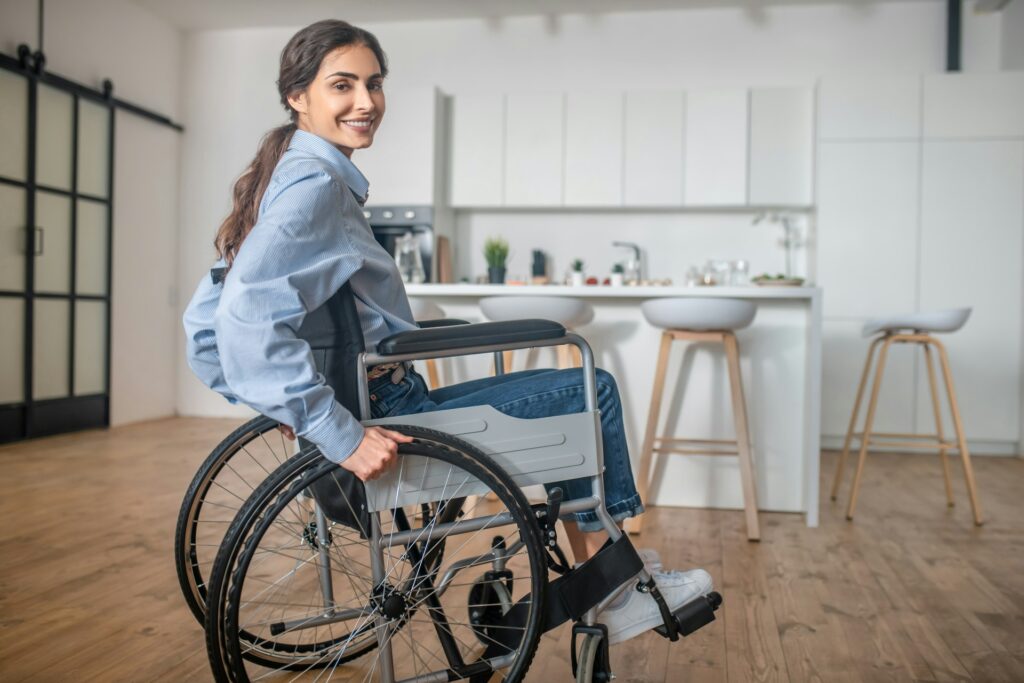Adjusting to life after an injury often requires changes both physically and in your living environment. Your home, which once felt entirely comfortable, may now present daily challenges. It’s essential to make adjustments that cater to new mobility needs to ensure comfort and safety.
Creating a home that accommodates these needs involves thoughtful planning and modifications. Whether it’s widening door frames or adding a ramp, each change can dramatically impact ease of movement. These modifications are crucial in preventing injury and promoting independence for those with mobility challenges.
By focusing on adjustments within key areas like bathrooms and kitchens, you can make your home conducive to a smoother recovery process. The right adaptations not only help maintain daily routines with ease but also provide a more welcoming and accessible environment for friends and family. Embracing these changes can open up your living space and make it feel safe and accommodating once again.
Understanding Mobility Needs Post-Injury
Adjusting your home for mobility after an injury requires understanding the specific needs that arise. Injuries can affect movement, making routine tasks challenging and potentially unsafe. Adapting your living space to your new circumstances ensures comfort and independence.
Key factors that influence mobility include the type of injury and individual physical limitations. For instance, recovering from a leg injury might require different modifications than those needed for someone dealing with spine-related injuries. Each scenario involves unique challenges that dictate specific home improvements.
A safe and accessible home environment is vital for injury recovery. It minimizes tripping hazards and alleviates strain from daily activities. This includes ensuring pathways are clear and easily navigable with sufficient lighting. Removing clutter and arranging furniture to allow easy movement can significantly impact comfort and safety. Taking proactive steps in understanding individual mobility requirements helps tailor home modifications that best support recovery and personal lifestyle needs.
Key Modifications for Enhanced Accessibility
Creating a home tailored for ease and safety involves specific modifications that cater to mobility challenges. These adjustments are designed to make day-to-day activities more manageable and improve overall quality of life.
Here are essential home modifications to consider:
– Ramps: Installing ramps at entry points eliminates the need for stairs, allowing smooth movement for wheelchairs or walkers.
– Wider Doorways: Expanding doorways accommodates mobility aids, providing uninterrupted transitions between rooms.
– Grab Bars and Railings: Placing grab bars along hallways and in bathrooms offers support and reduces fall risks.
– Non-Slip Flooring: Using non-slip materials in areas prone to moisture, like the kitchen and bathroom, prevents slipping.
These changes enhance accessibility by removing physical barriers, thus making living spaces functional for everyone. By focusing on these key adjustments, it’s possible to create a more inclusive environment that promotes safety and independence. The reduction of obstacles through thoughtful design leads to a more comfortable and supportive home.
Creating a Safe and Functional Bathroom
A well-designed bathroom can greatly enhance safety and comfort, especially after an injury. To prevent slips and falls, consider installing non-slip flooring. These surfaces provide necessary traction, reducing the risk of accidents. Another smart update is adding grab bars near toilets and in showers. These bars offer support, making movements easier and safer for users.
Walk-in showers are an excellent option for those with mobility issues. Unlike traditional tubs, they have low or no barriers, allowing effortless entry and exit. Hand-held showerheads make bathing simpler, providing flexibility for sit-down use. Additionally, adjustable benches provide comfort and stability during showers.
Consider lowering fixtures for effortless access. Ensure that sinks, mirrors, and other amenities are usable for those in wheelchairs or with other mobility aids. Clever placement of these elements improves accessibility without compromising style or functionality.
These thoughtful changes transform the bathroom into a welcoming space where safety meets convenience, offering peace of mind and ease of use for all occupants.
Planning Practical Kitchen Remodels
Adapting the kitchen for accessibility is essential in creating a user-friendly home. Start by adjusting the height of countertops, ensuring they’re accessible for everyone. Lowering counters makes food preparation easier and more comfortable for those in wheelchairs. Consider installing accessible appliances, like ovens with side-opening doors and refrigerators with pull-out shelving.
Creating space is crucial for maneuverability. Arrange kitchen items thoughtfully, ensuring pathways are wide enough for wheelchairs or walkers. Moving essential kitchenware to reachable areas reduces strain and keeps daily tasks straightforward.
Incorporate easy-to-use fixtures, such as lever-handle faucets that require minimal effort to operate. Consider touch-activated or smart home systems for added convenience. Enhanced lighting improves visibility, aiding in safe navigation and cooking.
By making these practical modifications, the kitchen becomes a place of independence and enjoyment, tailored to support individuals’ unique mobility needs.
Conclusion
Adjusting your home for mobility after an injury involves more than simple renovations; it’s about creating a space that supports independence and comfort. Incorporating essential modifications ensures safety without sacrificing style. From the bathroom to the kitchen, thoughtful design decisions make daily tasks manageable and enjoyable. Understanding mobility challenges and making these necessary improvements transforms your home into a nurturing environment that accommodates diverse needs.
By focusing on accessibility and safety, your home remains inviting for family members of all capacities. Prioritizing these elements reinforces the importance of a responsive living space, adaptable to life’s many changes. Investing in such adjustments not only enhances present usability but also prepares your home for future needs.
If you’re ready to make significant changes to your home’s accessibility, connect with BMR Homes Inc. Remodeling and Restoration. Our team brings expertise in creating spaces that balance safety and style, ensuring your home meets your specific mobility needs while maintaining a beautiful aesthetic. Let’s partner to craft the perfect environment for every moment of your life through our whole house remodeling in Homewood.

